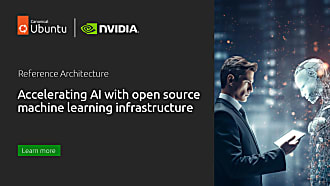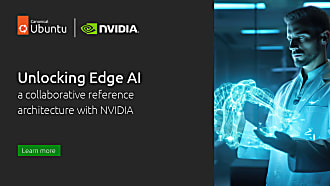Andreea Munteanu
on 14 October 2022
To create a machine learning model, you need to design and optimise the model’s architecture. This involves performing hyperparameter tuning, to enable developers to maximise the performance of their work. How do hyperparameters differ from model parameters?

Michal Hucko, Kubeflow engineer, and Andreea Munteanu, Product Manager will host a webinar on hyperparameter tuning.
Hyperparameters vs parameters
Model parameters
Model parameters are estimates of machine learning models. They are estimated based on the given dataset, using optimisation algorithms. They are required in order to perform any machine learning prediction. Model parameters influence how the model behaves on new, unseen data.
Model hyperparameters
Hyperparameters are configuration settings that allow machine learning models to be customised. They determine the algorithm’s parameters and are used to determine their values. They also determine the performance of the model. Unlike model parameters, they cannot be estimated by the model using a given dataset. Hyperparameter tuning is the process used to determine their value. The choice of their values influences model training efficiency.
What is hyperparameter tuning?
Hyperparameter tuning (or optimisation) is the process of identifying the optimal combination of hyperparameters that maximises model performance and minimises the loss function. It is a meta-optimisation task. The outcome of it is the best hyperparameter setting that enables the best model parameter setting.
Hyperparameter tuning methods
The right combination of hyperparameters depends on the use case. It requires a deep understanding of the hyperparameters as well as the machine learning model’s goal. Hyperparameter tuning can be performed both manually and automatically. Automated methods include:
- Random Search
- Grid Search
- Bayesian Optimisation
How does hyperparameter tuning work
Optimal hyperparameters are determined by running a single training process, with multiple trials, having a set objective. They have different values and are geared to either minimising or maximising specific metrics. A trial is a complete execution of the training application.
Each trial is, in fact, a particular hyperparameter setting; it’s unique. It is decided and limited by the developers, following the instructions or needs of the chosen method. During the process, the results are tracked. Once it finishes, a set of hyperparameter values are generated. They are best suited for the model to give its best performance.
Hyperparameter tuning with Charmed Kubeflow
Charmed Kubeflow is Canonical’s end-to-end, production-grade, MLOps platform. It supports hyperparameter tuning using Katib. The latest version of the tool came with support for new algorithms such as Population-based training.
Read more about Charmed Kubeflow 1.6 and what’s new for a developer,
Conclusion
During the machine learning cycle, developers have to make considered decisions regarding the design, architecture, and training process. Hyperparameter tuning is an essential part of the workflow. It enables developers to arrive at an optimal machine-learning model. Tools that ease the hyperparameter tuning process can make model optimisation a lot more seamless.



